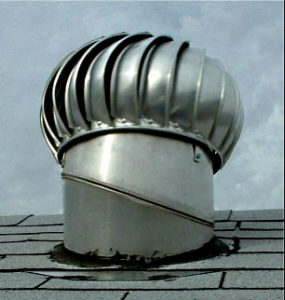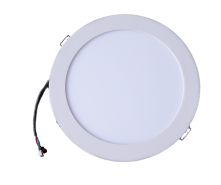Last Updated on August 22, 2024 by Solar Whiz
1. Whirlybirds Are Noisy

However, this doesn’t change the fact that almost everyone who has whirlybirds complains about the noise. Whirlybirds can easily get bent or rusted and the bearings that allow them to spin can easily get worn out. Any of these issues will cause the unit to make a grating or squeaking sound as it spins.
2. Whirly birds Are Dependent on Massive Amounts of Airflow to Function Properly
3. Whirly Birds Are Inefficient in Removing Moisture in Colder Months
It is important to ventilate your roof space during winter to keep moisture and condensation levels as low as possible. While Australia is known for our long hot summers, the winters can still be cold and very wet. This can cause a build-up of moisture in the house that can lead to mould growth. An efficient ventilation system will keep you healthy and comfortable through the winter months.
Whirly birds will continue to operate as long as there is wind to spin the turbines. However, because of their limited airflow capacity, they won’t be able to extract much moisture from your roof. As a result, you may just be losing valuable heat from your home.
4. Whirlybirds are Prone to Malfunction
5.Whirlybirds Require Periodic Maintenance
6. Whirly birds Are More Expensive Than You Think
As mentioned above, whirly birds can make a lot of noise when they aren’t installed properly or if they get damaged. To avoid these kinds of problems, you would need to buy a more expensive whirly birds from a more reputable brand. You will also need a roofer to install the unit for you. Both of these things will bump up the cost of your whirlybird installation. So much for a cheap and easy roof ventilation option!
Furthermore, a tendency to malfunction which means whirly birds require periodic maintenance. It can be costly to have your fan maintained and/or fixed whenever something goes wrong (which could be often). Many brands claim that a whirly bird is a great ‘set and forget’ ventilation option, but this clearly isn’t the case.
While individual whirly bird units might not be that expensive, the costs can add up quickly. Most businesses recommend at least 1 unit per 50-90m2 of roof space. That means that most homes will need more than one unit. Our smallest unit is as powerful as 12 whirlybirds! Evidently, it is far more cost effective to pay more upfront for a more reliable and powerful roof ventilation system like Solar Whiz.

Consider Buying a Whirlybird Alternative
With these common problems that stop whirlybirds from working like it should, we strongly encourage you to look at more durable roof ventilation options. Solar Whiz’s solar whirlybirds are much more resilient, and far more powerful than any traditional whirlybird on the market.
Solar Whiz is an Australian-made product designed for the harsh environments this country has to offer. If you need something to powerfully and effectively extract hot air from your roof space, check out Solar Whiz. Our solar whirlybird has an airflow capacity of up to 2300 m3/h, compared to just 100 m3/h for regular whirlybirds.
Don’t delay! Find out more about how our roof ventilation units can save you money, keep you cool and improve the indoor air quality!
Frequently Asked Questions
Are whirlybirds effective at cooling a roof?
Whirlybirds can provide some cooling benefits, but they may not be as effective as other ventilation systems. Their effectiveness depends on various factors, and in some cases, additional ventilation solutions may be required for optimal cooling.
Do whirlybirds require maintenance?
Whirlybirds require periodic maintenance, such as cleaning and lubricating to function properly.
Do whirlybirds work in all weather conditions?
Whirlybirds work best in windy conditions but can still be effective in mild to moderate wind speeds. However, they may not be as effective in calm or still conditions.
Are there any building code requirements for installing whirlybirds?
Building code requirements for whirlybird installation can vary depending on your location. It’s best to consult with a professional installer or your local building authority to ensure compliance with any relevant regulations.
Are whirlybirds effective at reducing humidity levels?
While whirlybirds can help improve ventilation and reduce moisture in the roof space, they may not be as effective at reducing high humidity levels. In areas with extremely high humidity, additional ventilation solutions may be required.



